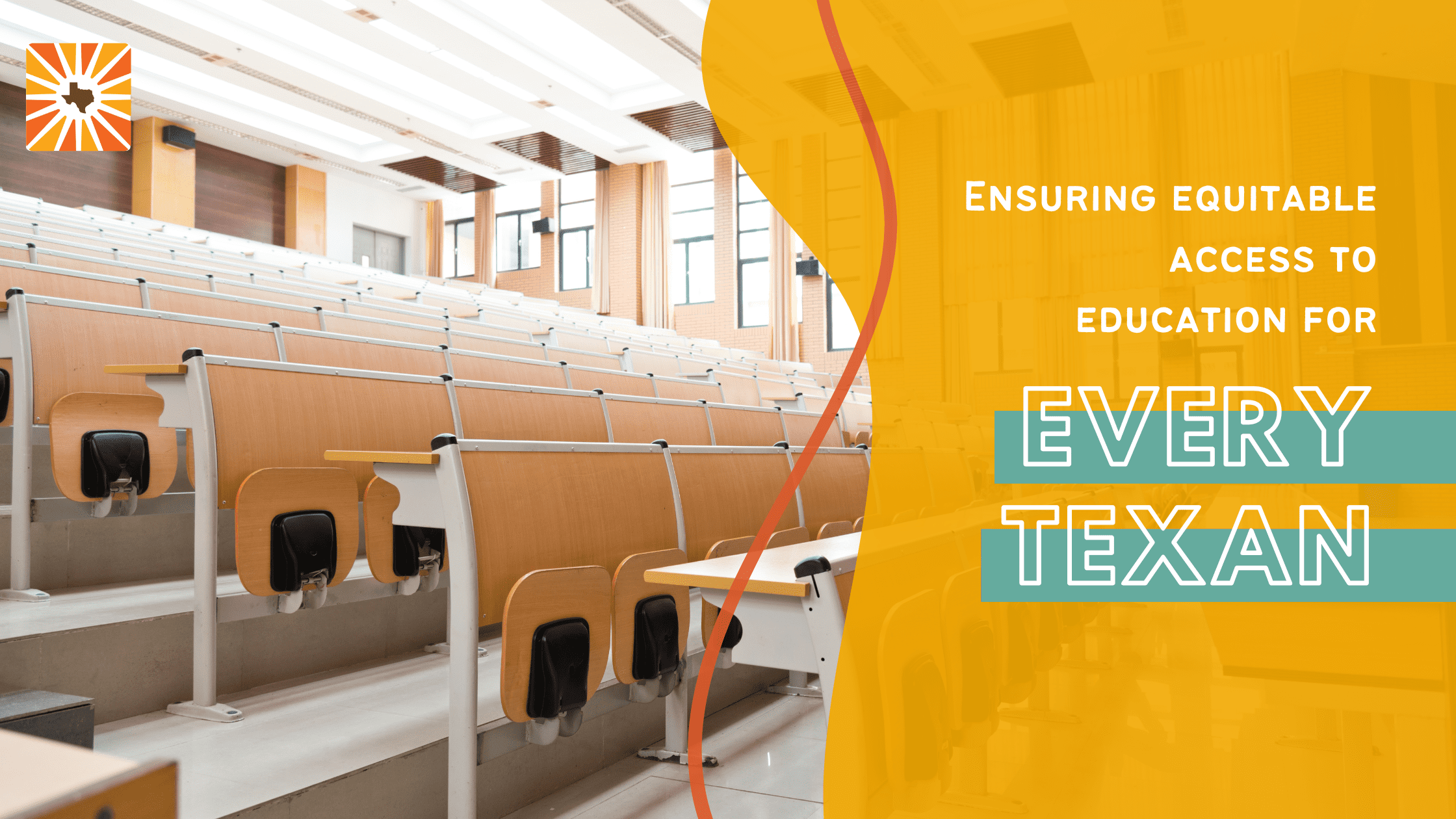At the start of the year, educators and families across the U.S. were excited about the release of a better FAFSA. Texans from all corners of this state deserve and desire access to post-secondary opportunities that are affordable – regardless of race, class, or gender. The latest FAFSA cycle brought high hopes of a smoother system that would reduce both the time it takes to complete the form and its difficulty through more simplified language, and as a result, increase thousands of students’ access to affordable college.
As a former college adviser who worked in a Title I high school, I too was relieved and excited about the new changes. Many of my former students and families struggled with completing their FAFSA due to the complicated questions, the number of questions, and the amount of documentation and paperwork needed among many other complaints. The new FAFSA is a product of the 2020 FAFSA Simplification Act, which was passed by Congress. However, our initial optimism was met with a few unexpected challenges, including glitches and lower completion rates. The federal government alongside state colleges and universities are working diligently to address and overcome these issues.
Importance of the FAFSA
In 2022, a little over 669,000 students enrolled in two-year public colleges, and 525,600 students enrolled in four-year public colleges and universities. The Higher Education Coordinating Board’s (THECB) April board meeting provides new insights into the need for FAFSA and other avenues to provide all Texans with access to affordable post-secondary education. In Fall 2023, about 93,000 students who were Texas residents enrolled in a public four-year university as first-time undergraduates. While the percentage of Texas residents accepted into public universities increased by about 3% between 2017 and 2023 (aligning with population trends), the number of Texas-resident students who enrolled in a 4-year public university decreased by 13%. Cost of attendance is a driving factor of low enrollment. Nearly half of all Texas students face financial challenges. Although the FAFSA aids in alleviating some of that burden, our state has to help eliminate the overall challenge. In 2023, 575,000 Texan students received Pell Grants, the second-highest ranking in the country. The average Pell Grant amount is around $4,500, which means the federal government provided $2.6 billion in Pell Grant aid to Texas students alone. Without a system that’s friendly to students and families, thousands of students will miss out on funding opportunities and struggle to enroll in postsecondary institutions.
Nearly half of all Texas students face financial challenges. Although the FAFSA aids in alleviating some of that burden, our state has to help eliminate the overall challenge.
The Challenges
The most obvious challenge of this year’s FAFSA was the late release of the form. Annually, Oct. 1 marks the starting date of the FAFSA; however, this year’s form launched three months late. This delayed date decreased the time students had to complete their applications as well as the time colleges and universities had to process applications. In response to this challenge and the others below, many colleges and universities in Texas and across the U.S. extended their FAFSA and enrollment deadlines. The federal government also offers resources to assist the effectiveness of colleges and organizations.
There were also a few errors with the FAFSA itself:
- Issues within the funding formula failed to account for inflation.
- Families without a social security number faced difficulties completing their FAFSA.
Completion Rates
FAFSA completion rates are lower than last year. As of May 2024, the completion rate for Texas high school seniors is about 54%, a 9-percentage point change from the previous year. While there are more than 366,000 Texas students, only 189,043 have completed their FAFSA. Texas’ completion rate is about 8% higher than the nation’s.
Only 30% of our Texas school districts have a completion rate equal to or greater than the state average, with lower completion rates on the east side of Texas. More troubling trends arise when looking at this data by school income level, percentage of students of color, and geographic locale. Texas’ high- and low-income high schools have the same percentage of seniors completing their FAFSA. However, low-income schools are experiencing a more significant decrease in FAFSA completions. Completion rates were about 19% higher in low-income schools last year and 16% higher in higher-income schools.
Schools with a higher percentage of students of color have a slightly lower FAFSA completion rate and experience a more significant decrease in completion rates (down 20% from last year). Texas towns and rural communities exhibit lower FAFSA completion rates, although rural communities have the most minor percentage change from the previous year.
When we consider which students are most impacted and have the least access, ability, or generational wealth to rely on in order to afford their post-secondary education, it is low-income, rural, and communities of color who are affected the most by this process. Completion trends do not indicate quality or effort, but more so the lack of resources and adequate systems to properly serve communities with different needs.
Tips for Completion
- Just do it – today. While colleges have priority deadlines, you’re hardly ever too late to fill out your FAFSA.
- Ask for help! You do not have to navigate this process alone. School counselors, college counselors, and nonprofit organizations across the state are always willing to assist with FAFSA completion.
- Expect delays. Patience is the key to success; colleges and universities are also navigating a new and slow system. You might not hear back from institutions as quickly as you hoped. Always feel free to check-in and ask for updates, but know that someone is working hard on your behalf.
Despite the challenges and low completion rates, the new FAFSA appears promising. We remain hopeful that when the next FAFSA is released in October, a smoother system will provide more students — especially students from low-income, first-generation, Black, and brown communities – the aid they need to pursue their higher education goals.

